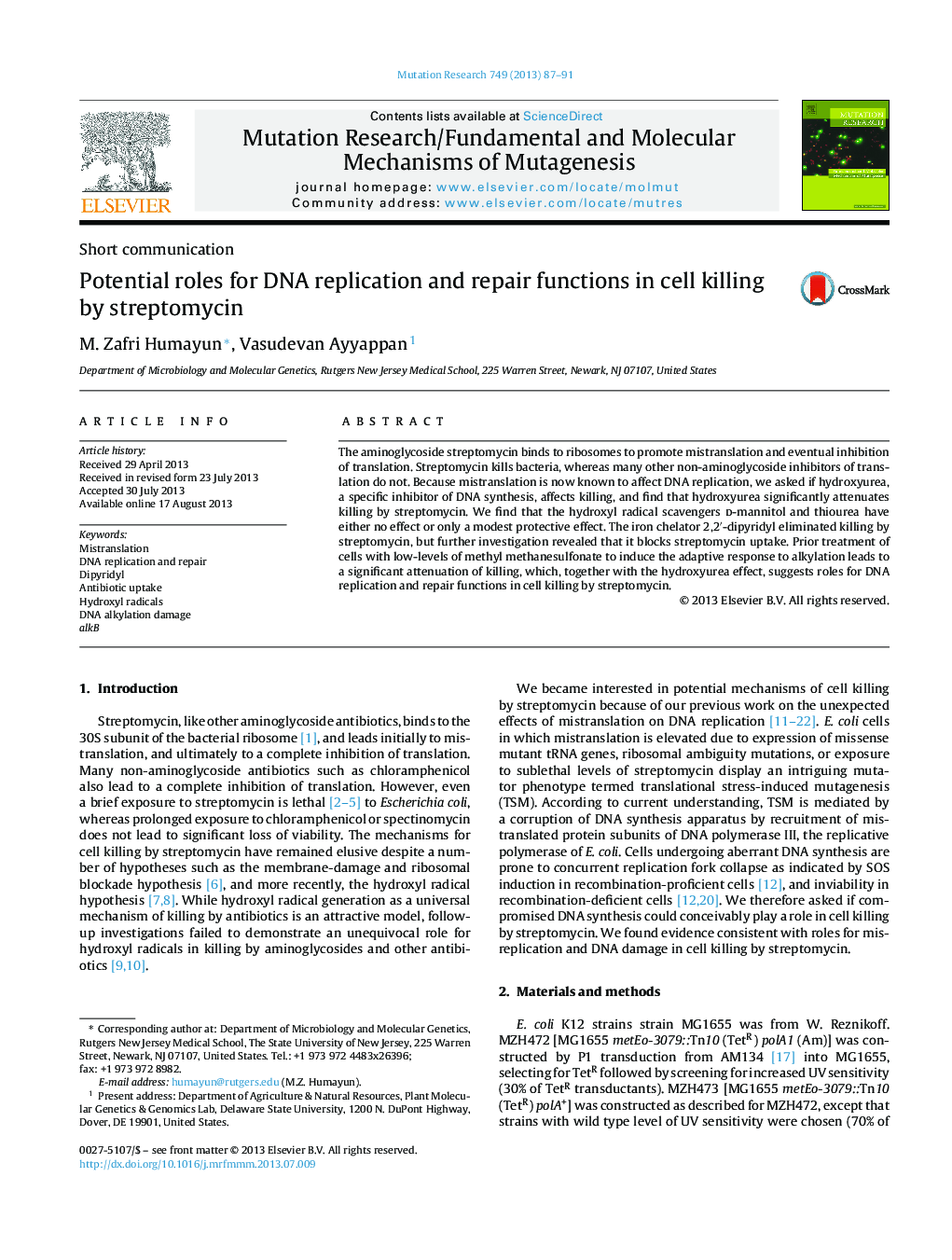| Article ID | Journal | Published Year | Pages | File Type |
|---|---|---|---|---|
| 2146386 | Mutation Research/Fundamental and Molecular Mechanisms of Mutagenesis | 2013 | 5 Pages |
The aminoglycoside streptomycin binds to ribosomes to promote mistranslation and eventual inhibition of translation. Streptomycin kills bacteria, whereas many other non-aminoglycoside inhibitors of translation do not. Because mistranslation is now known to affect DNA replication, we asked if hydroxyurea, a specific inhibitor of DNA synthesis, affects killing, and find that hydroxyurea significantly attenuates killing by streptomycin. We find that the hydroxyl radical scavengers d-mannitol and thiourea have either no effect or only a modest protective effect. The iron chelator 2,2′-dipyridyl eliminated killing by streptomycin, but further investigation revealed that it blocks streptomycin uptake. Prior treatment of cells with low-levels of methyl methanesulfonate to induce the adaptive response to alkylation leads to a significant attenuation of killing, which, together with the hydroxyurea effect, suggests roles for DNA replication and repair functions in cell killing by streptomycin.
